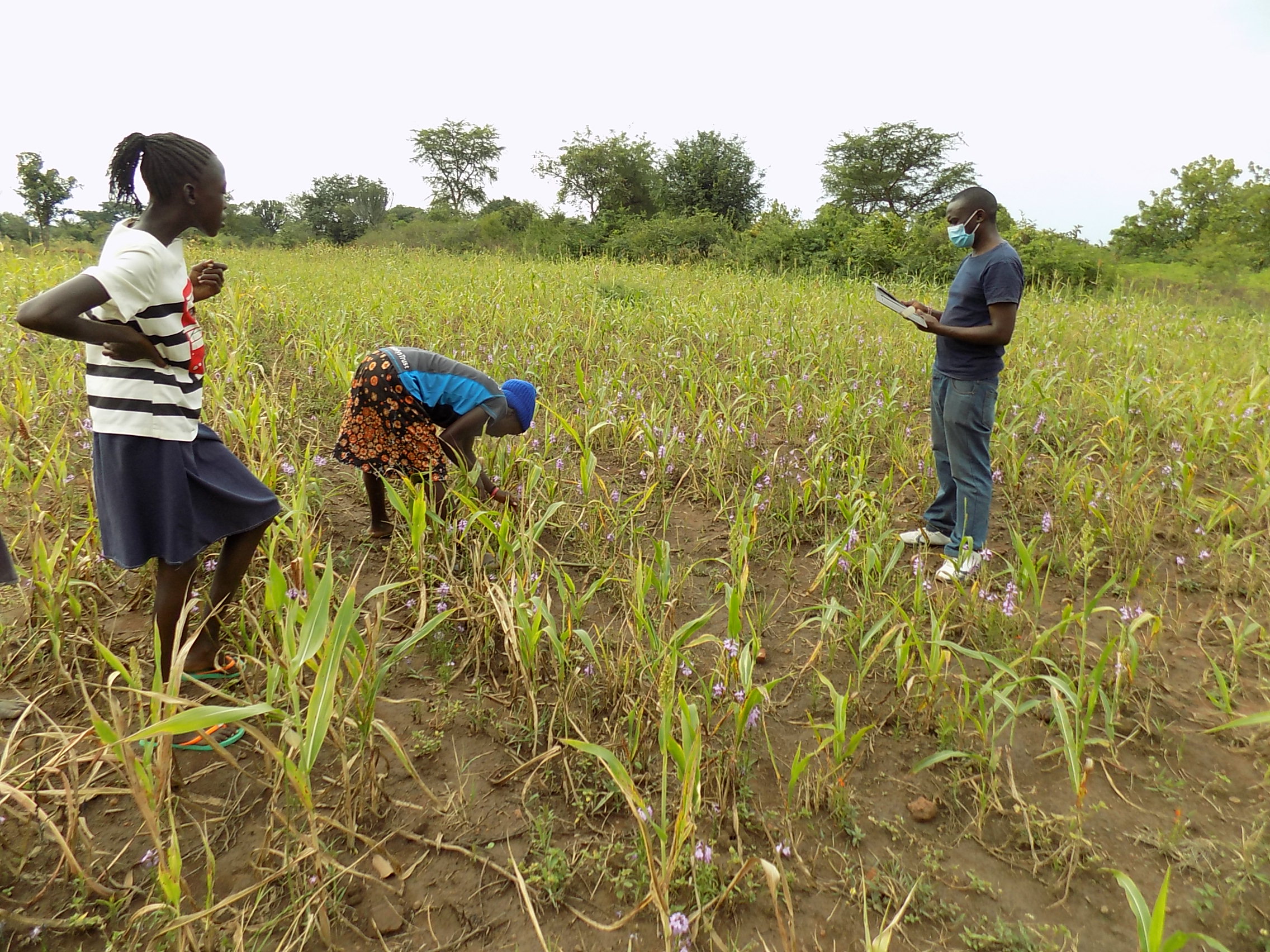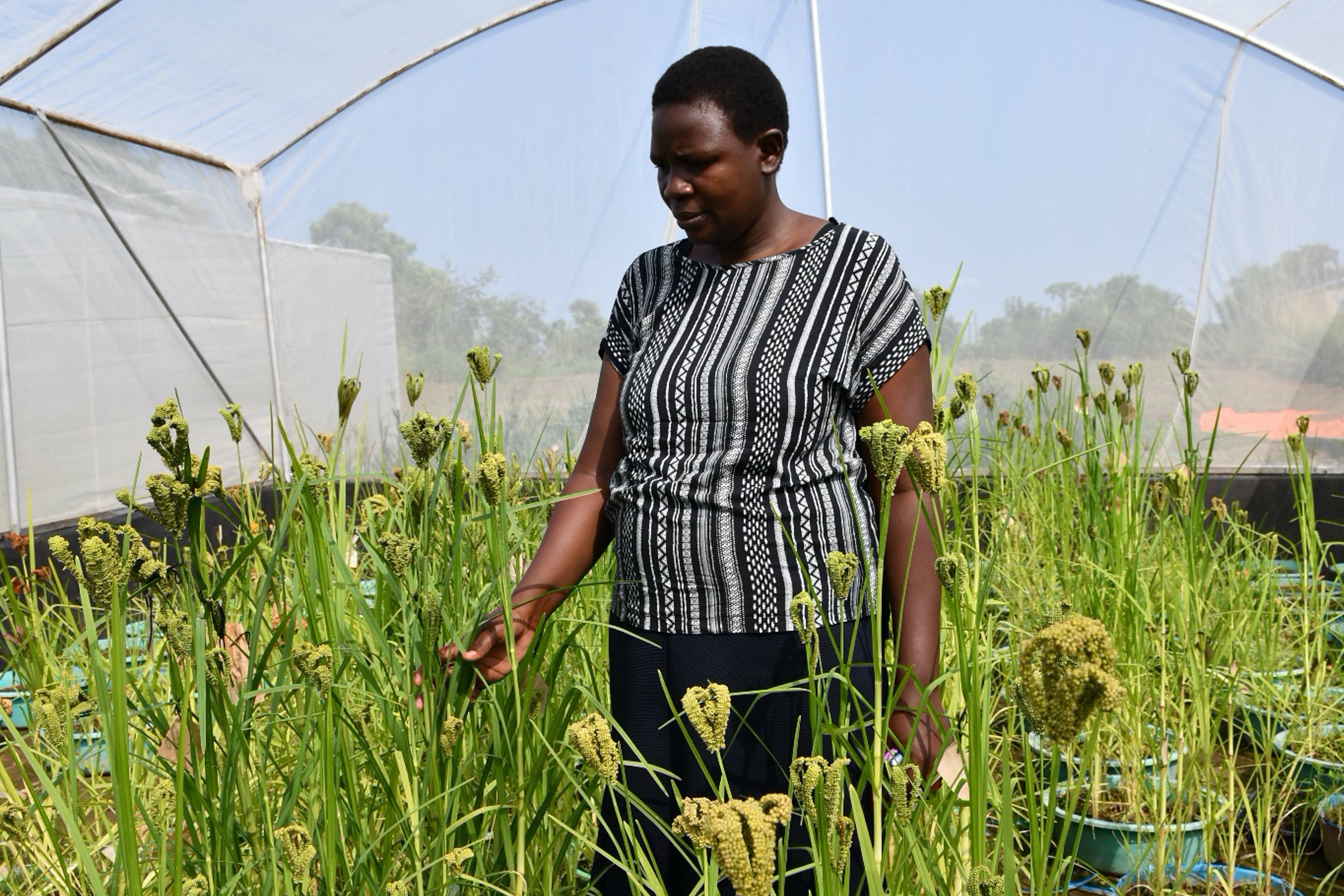Sorghum growers across Africa’s dry-land regions face a common, relentless foe — striga. This parasitic plant attacks the root of millets like sorghum, devastating the plant’s yield and endangering food security for rural communities which depend on sorghum as a major source of carbohydrates and micronutrients.
Plant breeders across Africa are on a mission to defend farmers against striga infestations. To start, they must be able to measure the growth, performance and composition of sorghum and striga, which historically has been difficult due to access to and investment in technology.
Now, accessible digital tools are being deployed in innovative ways by the Center of Innovation for Finger Millet and Sorghum (CIFMS), which is helping scientists react swiftly to breed improved varieties.
With support from ILCI’s breeding informatics and phenomics teams, CIFMS is updating and adapting existing technologies for digital data collection in the field. Together, the teams developed an approach to collect and analyze striga seed samples within the Field Book app, a single digital platform that simplifies field data collection while reducing transcription errors. Breeders are working directly with smallholder farmers to simultaneously collect seeds and capture farmers’ knowledge about the striga affecting their fields, according to Scovia Adikini, principal investigator of CIFMS, which launched in 2021 and is based at the National Semi Arid Resources Research Institute (NaSARRI) in Uganda.
Co-developing and adapting tools to the unique circumstances of national breeding programs is at the heart of ILCI’s philosophy.
”By working collaboratively, we were able to develop a robust solution for striga collection and surveys using Field Book, even though it wasn't originally designed for this purpose.
Trevor Rifeco-lead of the phenomics objective area based at Kansas State University
With this new approach, CIFMS — comprised of scientists across Uganda, Kenya and Tanzania — can use Field Book to collect both survey answers from farmers and sample data, including geolocation data, for the striga being collected. Since the data management system (Breeding Management System, known as BMS) is designed to work with Field Book, researchers can easily take Field Book data and import it into BMS for analysis and distribution. Though it was not an original feature of the technology, ILCI researchers now envision adding additional survey features to Field Book that other programs could benefit from, said Rife.

Above: Researchers at NaSSARI in Uganda use Field Book to capture geolocation data for sorghum and striga alongside local farmers. Photo provided by NaSSARI.
Field Book also captures field photos that are used to optimize machine learning methods for counting striga in the field. The generated information from the striga field survey has guided the design and establishment of screening trials in striga hotspot environments. In Uganda, two sorghum trials composed of improved sorghum lines and land races have been established.
As the race to tackle striga continues, breeders are also thinking about long-term sorghum production. How can breeders support local economies and ensure that the striga-free sorghum will be successful in the market? The Innovation Lab’s engaged team approach is aligning all disciplines to guide new discoveries and thinking. With guidance from ILCI’s priority setting and cross-cutting themes teams, CIFMS is identifying gaps in the market, particularly targeting medium- and large-scale processors in the beer and food industries.
CIFMS received advanced lines of sorghum targeting the brewing (42 lines) and food (72 lines) industries from the International Crops Research Institute for the Semi-Arid Tropics (ICRISAT) and have been planted them at NaSARRI. Additionally, 64 grain quality lines and 30 early duration lines of finger millet were received from ICRISAT and have been planted for evaluation at NaSARRI.
”Being able to adapt existing technologies to our unique challenges in the dry lands of sub-Saharan Africa has been a game-changer. We are excited about the opportunity to collaborate with researchers from around the world and collectively tackle striga in our sorghum breeding program.
Scovia AdikiniPrincipal Investigator, CIFMS




